1-Anilino-2,5-disulfonic acid
Modify Date: 2024-01-02 09:22:37
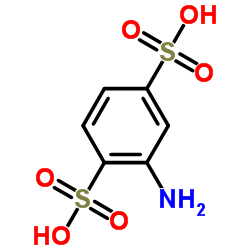
1-Anilino-2,5-disulfonic acid structure
|
Common Name | 1-Anilino-2,5-disulfonic acid | ||
|---|---|---|---|---|
| CAS Number | 98-44-2 | Molecular Weight | 253.253 | |
| Density | 1.8±0.1 g/cm3 | Boiling Point | 500ºC | |
| Molecular Formula | C6H7NO6S2 | Melting Point | >300°C | |
| MSDS | N/A | Flash Point | N/A | |
| Name | Aniline-2,5-disulfonic acid |
|---|---|
| Synonym | More Synonyms |
| Density | 1.8±0.1 g/cm3 |
|---|---|
| Boiling Point | 500ºC |
| Melting Point | >300°C |
| Molecular Formula | C6H7NO6S2 |
| Molecular Weight | 253.253 |
| Exact Mass | 252.971481 |
| PSA | 151.52000 |
| LogP | -1.03 |
| Index of Refraction | 1.667 |
Synonym: Section 2 - COMPOSITION, INFORMATION ON INGREDIENTS
Risk Phrases: 36/37/38 Section 3 - HAZARDS IDENTIFICATION EMERGENCY OVERVIEW
Irritating to eyes, respiratory system and skin. Potential Health Effects Eye: Causes eye irritation. Skin: Causes skin irritation. May be harmful if absorbed through the skin. Ingestion: May cause irritation of the digestive tract. May be harmful if swallowed. Inhalation: Causes respiratory tract irritation. May be harmful if inhaled. Chronic: Not available. Section 4 - FIRST AID MEASURES Eyes: Flush eyes with plenty of water for at least 15 minutes, occasionally lifting the upper and lower eyelids. Get medical aid. Skin: Get medical aid. Flush skin with plenty of water for at least 15 minutes while removing contaminated clothing and shoes. Ingestion: Get medical aid. Wash mouth out with water. Inhalation: Remove from exposure and move to fresh air immediately. If not breathing, give artificial respiration. If breathing is difficult, give oxygen. Get medical aid. Notes to Physician: Treat symptomatically and supportively. Section 5 - FIRE FIGHTING MEASURES General Information: As in any fire, wear a self-contained breathing apparatus in pressure-demand, MSHA/NIOSH (approved or equivalent), and full protective gear. Extinguishing Media: Use foam, dry chemical, or carbon dioxide. Section 6 - ACCIDENTAL RELEASE MEASURES General Information: Use proper personal protective equipment as indicated in Section 8. Spills/Leaks: Vacuum or sweep up material and place into a suitable disposal container. Section 7 - HANDLING and STORAGE Handling: Avoid breathing dust, vapor, mist, or gas. Avoid contact with skin and eyes. Storage: Store in a cool, dry place. Store in a tightly closed container. Section 8 - EXPOSURE CONTROLS, PERSONAL PROTECTION Engineering Controls: Facilities storing or utilizing this material should be equipped with an eyewash facility and a safety shower. Use adequate ventilation to keep airborne concentrations low. Exposure Limits CAS# 98-44-2: Personal Protective Equipment Eyes: Not available. Skin: Wear appropriate protective gloves to prevent skin exposure. Clothing: Wear appropriate protective clothing to prevent skin exposure. Respirators: Follow the OSHA respirator regulations found in 29 CFR 1910.134 or European Standard EN 149. Use a NIOSH/MSHA or European Standard EN 149 approved respirator if exposure limits are exceeded or if irritation or other symptoms are experienced. Section 9 - PHYSICAL AND CHEMICAL PROPERTIES Physical State: Powder Color: off-white Odor: Not available. pH: Not available. Vapor Pressure: Not available. Viscosity: Not available. Boiling Point: Not available. Freezing/Melting Point: Not available. Autoignition Temperature: Not available. Flash Point: Not available. Explosion Limits, lower: Not available. Explosion Limits, upper: Not available. Decomposition Temperature: Solubility in water: Specific Gravity/Density: Molecular Formula: C6H7NO6S2 Molecular Weight: 253.2 Section 10 - STABILITY AND REACTIVITY Chemical Stability: Not available. Conditions to Avoid: Incompatible materials. Incompatibilities with Other Materials: Strong oxidizing agents, acids, acetic anhydride, acid chlorides, carbon dioxide. Hazardous Decomposition Products: Nitrogen oxides, carbon monoxide, carbon dioxide, sulfur oxides (SOx), including sulfur oxide and sulfur dioxide. Hazardous Polymerization: Has not been reported Section 11 - TOXICOLOGICAL INFORMATION RTECS#: CAS# 98-44-2: CZ9250000 LD50/LC50: CAS# 98-44-2: Draize test, rabbit, eye: 100 mg/24H Moderate; Draize test, rabbit, skin: 500 mg/24H Mild. Carcinogenicity: 2,5-Disulfoaniline - Not listed by ACGIH, IARC, or NTP. Other: See actual entry in RTECS for complete information. Section 12 - ECOLOGICAL INFORMATION Section 13 - DISPOSAL CONSIDERATIONS Dispose of in a manner consistent with federal, state, and local regulations. Section 14 - TRANSPORT INFORMATION IATA No information available. IMO No information available. RID/ADR No information available. Section 15 - REGULATORY INFORMATION European/International Regulations European Labeling in Accordance with EC Directives Hazard Symbols: XI Risk Phrases: R 36/37/38 Irritating to eyes, respiratory system and skin. Safety Phrases: S 26 In case of contact with eyes, rinse immediately with plenty of water and seek medical advice. S 37/39 Wear suitable gloves and eye/face protection. WGK (Water Danger/Protection) CAS# 98-44-2: 1 Canada CAS# 98-44-2 is listed on Canada's NDSL List. CAS# 98-44-2 is listed on Canada's Ingredient Disclosure List. US FEDERAL TSCA CAS# 98-44-2 is listed on the TSCA inventory. SECTION 16 - ADDITIONAL INFORMATION N/A |
CHEMICAL IDENTIFICATION
HEALTH HAZARD DATAACUTE TOXICITY DATA
|
| Hazard Codes | Xi |
|---|---|
| Risk Phrases | R36/37/38 |
| Safety Phrases | S26-S36/37/39 |
| RTECS | CZ9250000 |
| HS Code | 2921499090 |
|
~90% 
1-Anilino-2,5-d... CAS#:98-44-2 |
| Literature: Jagadeesh; Karthikeyan; Nithya; Sandhya, Y. Sree; Reddy, S. Sudhaker; Reddy, P. Pradeep Kumar; Kumar, M. Vinod; Charan, K.T. Prabhu; Narender; Bhagat Journal of Molecular Catalysis A: Chemical, 2010 , vol. 328, # 1-2 p. 99 - 107 |
|
~% 
1-Anilino-2,5-d... CAS#:98-44-2 |
| Literature: US5315036 A1, ; |
|
~% 
1-Anilino-2,5-d... CAS#:98-44-2 |
| Literature: DE489847 ; Fortschr. Teerfarbenfabr. Verw. Industriezweige, vol. 16, p. 382 |
| HS Code | 2921499090 |
|---|---|
| Summary | 2921499090 other aromatic monoamines and their derivatives; salts thereof VAT:17.0% Tax rebate rate:9.0% Supervision conditions:none MFN tariff:6.5% General tariff:30.0% |
| 1,4-Benzenedisulfonic acid, 2-amino- |
| EINECS 202-669-6 |
| 1-Anilino-2,5-disulfonic acid |
| WSQR BZ DSWQ |
| 2-aminobenzene-1,4-disulfonic acid |
| MFCD00035753 |
| 2-Amino-1,4-benzenedisulfonic acid |
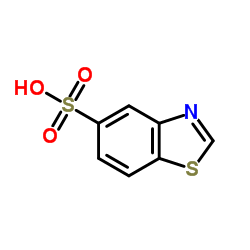
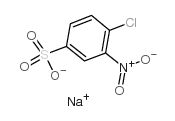
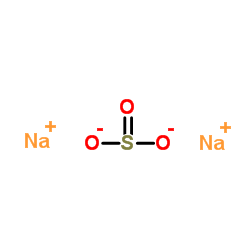
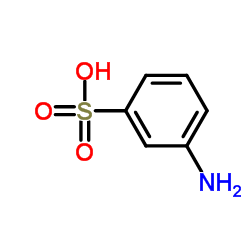
![2-[(4-amino-7-sulfonaphthalen-1-yl)diazenyl]benzene-1,4-disulfonic acid structure](https://www.chemsrc.com/caspic/022/69774-80-7.png) CAS#:69774-80-7
CAS#:69774-80-7 CAS#:893-39-0
CAS#:893-39-0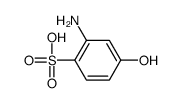 CAS#:5857-93-2
CAS#:5857-93-2
